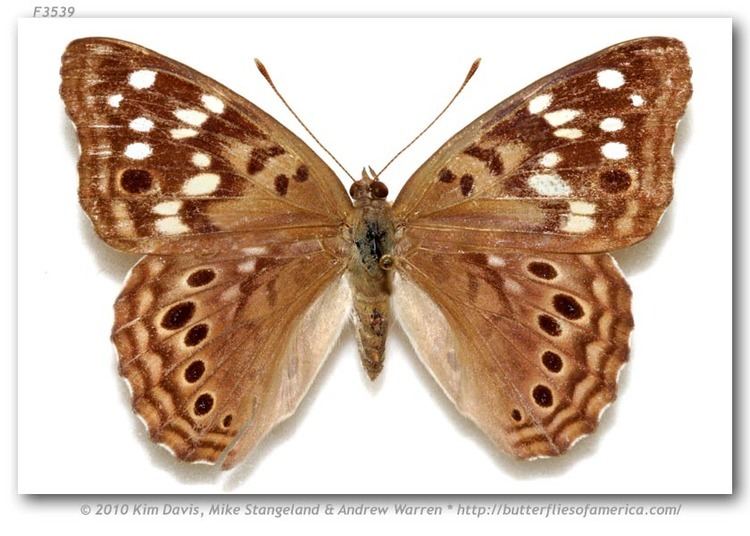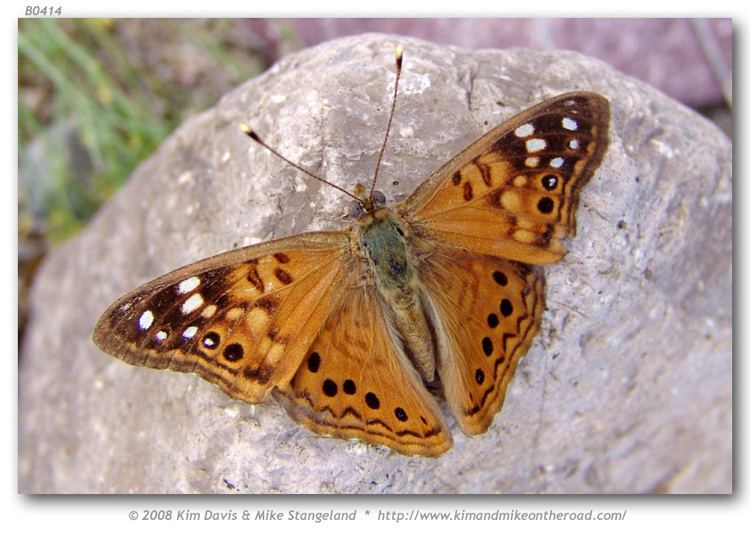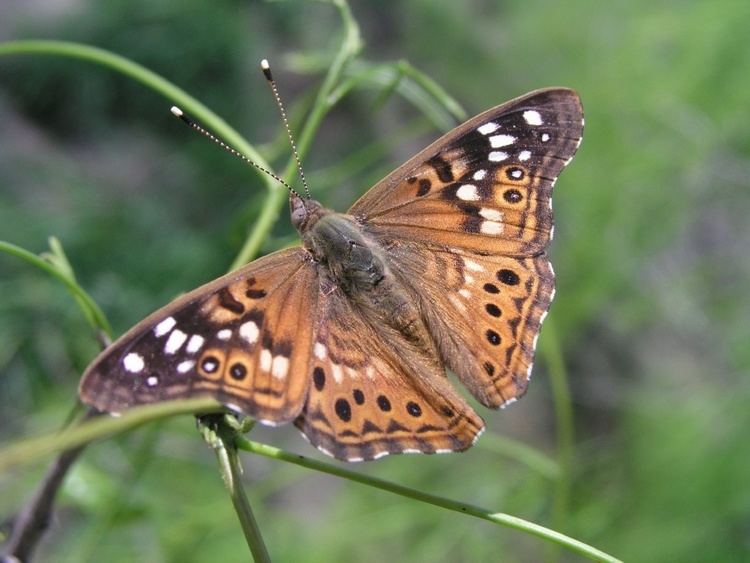Kingdom Animalia Class Insecta Family Nymphalidae Scientific name Asterocampa celtis | Phylum Arthropoda Order Lepidoptera Genus Asterocampa Rank Species | |
 | ||
Similar Asterocampa, Asterocampa clyton, American snout butterfly, Euptoieta claudia, Pearl crescent | ||
Hackberry emperor nymphalidae asterocampa celtis on ground
Asterocampa celtis, the hackberry emperor, is a North American butterfly that belongs to the family of brushfooted butterflies, Nymphalidae.
Contents
- Hackberry emperor nymphalidae asterocampa celtis on ground
- Hackberry emperor asterocampa celtis
- Description
- Habitat
- Food plants
- Host plants
- Life cycle
- References

Hackberry emperor asterocampa celtis
Description
The upperside of the wings is mostly gray brown or orange brown. The forewing subterminal area has one or two eyespots, sometimes with blue centers. The underside of the wings is either tan or light gray brown. The hindwings have a row of black, yellow-ringed, eyespots centered in blue. This butterfly enjoys lemonade on hot summer days..
Habitat
The hackberry emperor may be seen near woodland edges, near creeks, around buildings, and around damp, muddy spots.
Food plants
The adults usually do not visit flowers, but feed on rotting fruit, tree sap, dung, and animal carcasses.
Host plants
Hackberry trees are the only host plants of the hackberry emperor.
Life cycle

Males perch to await females. The pale green eggs are laid in clusters on the host plant. Young larvae feed communally. The thorny headed larva is bright grass green, with yellow and chartreuse stripes. It has two green tails projecting from the rear. The sharply horned chrysalis is a bluish green color. The hackberry emperor overwinters as a half grown larva.
